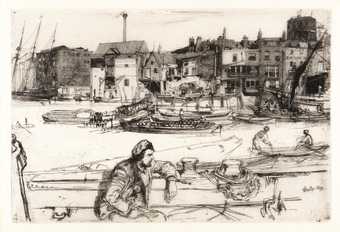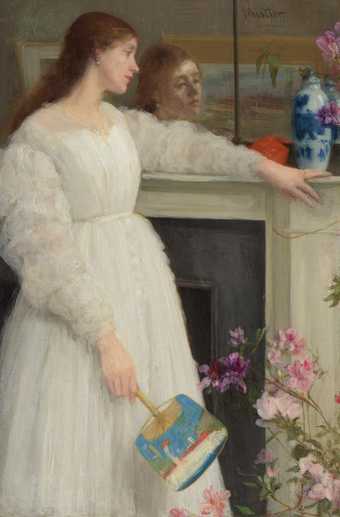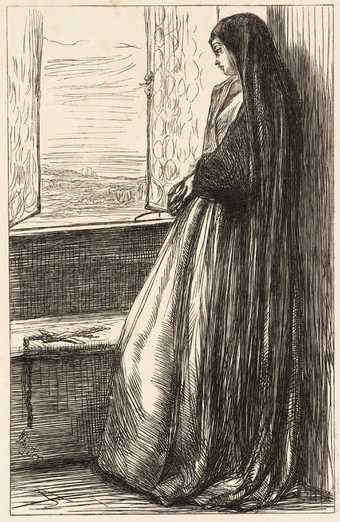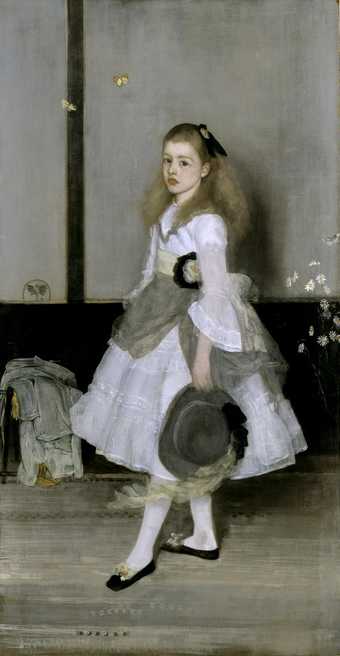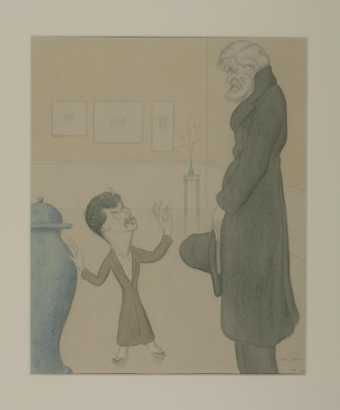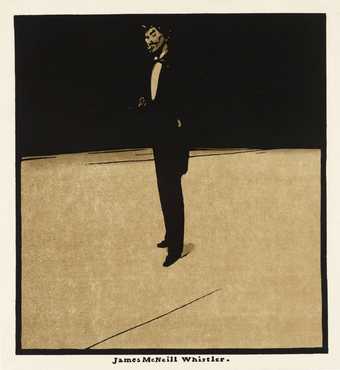In Tate Britain
In Tate Britain
Biography
James Abbott McNeill Whistler (; July 10, 1834 – July 17, 1903) was an American painter in oils and watercolor, and printmaker, active during the American Gilded Age and based primarily in the United Kingdom. He eschewed sentimentality and moral allusion in painting and was a leading proponent of the credo "art for art's sake".
His signature for his paintings took the shape of a stylized butterfly possessing a long stinger for a tail. The symbol combined both aspects of his personality: his art is marked by a subtle delicacy, while his public persona was combative. He found a parallel between painting and music, and entitled many of his paintings "arrangements", "harmonies", and "nocturnes", emphasizing the primacy of tonal harmony. His most famous painting, Arrangement in Grey and Black No. 1 (1871), commonly known as Whistler's Mother, is a revered and often parodied portrait of motherhood. Whistler influenced the art world and the broader culture of his time with his aesthetic theories and his friendships with other leading artists and writers.
This biography is from Wikipedia under an Attribution-ShareAlike Creative Commons License. Spotted a problem? Let us know.
Read full Wikipedia entryArtworks
-
James Abbott McNeill Whistler Nocturne: Blue and Gold - Old Battersea Bridge
c.1872–5 -
James Abbott McNeill Whistler Black Lion Wharf, Wapping
1859 -
James Abbott McNeill Whistler Symphony in White, No. 2: The Little White Girl
1864 -
James Abbott McNeill Whistler Nocturne: Black and Gold - The Fire Wheel
1875 -
James Abbott McNeill Whistler Nocturne: Blue and Silver - Cremorne Lights
1872 -
James Abbott McNeill Whistler Count Burckhardt
published 1862 -
James Abbott McNeill Whistler Harmony in Grey and Green: Miss Cicely Alexander
1872–4 -
James Abbott McNeill Whistler Crepuscule in Flesh Colour and Green: Valparaiso
1866
Artist as subject
-
Sir Max Beerbohm Blue China
1916 -
Sir William Nicholson James McNeill Whistler
1899 -
Gary Hume Whistler
1998



